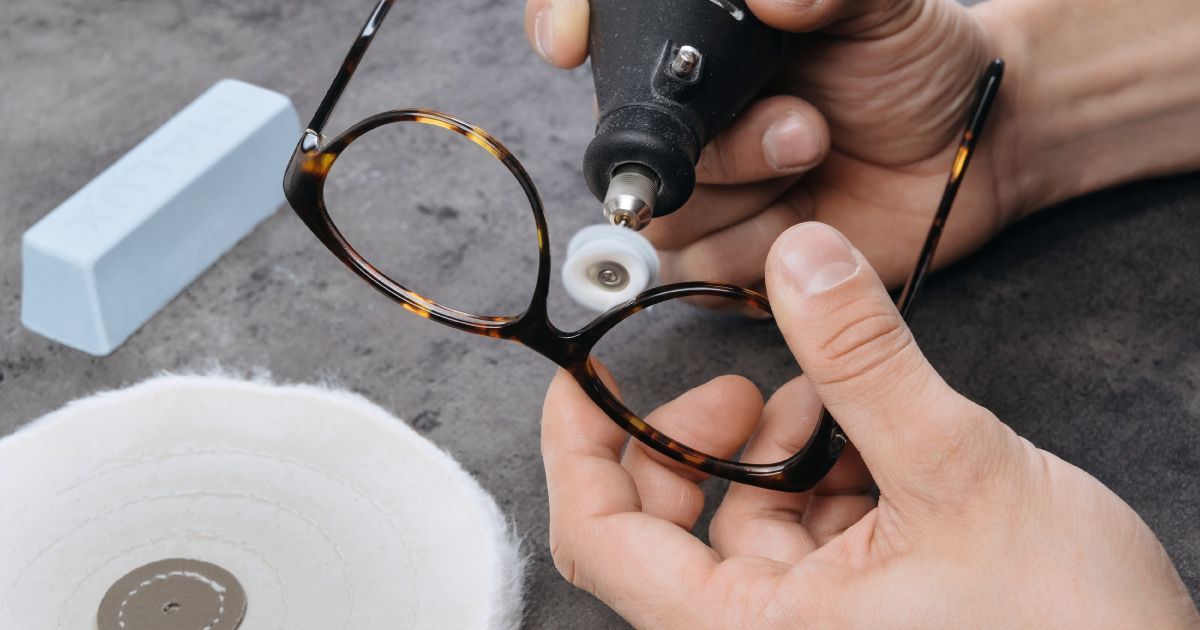Mastering Eyewear Restoration: Bringing Vintage Glasses Back to Life

Read time: 4 minutes
Vintage eyewear holds a treasure trove of history and style, often embodying the fashion and craftsmanship of bygone eras. However, the passage of time can leave these iconic pieces in less-than-perfect condition. Restoring vintage eyewear to its former glory is not just a matter of repair but an art form practiced by skilled artisans who blend precision with passion.
Join us as we uncover the meticulous art of bringing vintage eyewear back to its original beauty and functionality.
Understanding the Need for Vintage Eyewear Restoration
Vintage eyewear isn't just about style; these pieces often carry personal or historical significance. However, exposure to elements such as sunlight, moisture, or simple wear from regular use can degrade even the most robust materials over time. Restoring such eyepieces not only preserves their aesthetic appeal but also ensures that they can still be used in everyday life. Before any restoration can begin, it's crucial to evaluate the extent of damage thoroughly. Experts typically look for common issues such as misaligned frames, scratched lenses, corroded metal, or brittle components to understand the scope of repair needed.
The Delicate Process of Disassembly and Cleaning
Restoration begins with carefully disassembling the eyewear. This step is delicate; older materials can be fragile and more prone to breaking. Skilled professionals use specialized tools to avoid causing further damage. Cleaning is equally meticulous, involving gentle washes and sometimes ultrasonic baths designed to remove years of buildup without harming the vintage materials.
For vintage eyewear, even the cleaning solutions used are often mild or specifically formulated to preserve older materials like celluloid or early plastics, which are susceptible to warping or discoloration if treated harshly.
Component Replacement and Restoration
One of the major challenges in restoring vintage eyewear is finding replacement parts that match the original in both form and function. In cases where the exact parts are no longer available, skilled restoration specialists might source vintage parts from similar models or, occasionally, have to create bespoke components that match the original specifications. Metals may need to be re-plated, screws replaced, and missing accents like rhinestones or inlays carefully sourced to bring the piece as close to its original state as possible.
For frames that have suffered more extensive damage, the restoration may include reshaping or welding metal or using specially developed adhesives to repair cracks in plastic frames. This phase demands an intricate blend of historical understanding, craftsmanship, and creativity. Each decision made respects the integrity and era of the vintage eyewear, ensuring that modifications are both functional and aesthetic.
Polishing and Finishing Touches
The final steps in the restoration process focus on the aesthetics. Polishing is vital to restore the original shine of metal and plastic frames. For metal parts, this might involve buffing and possibly re-plating with gold or silver to bring back their luster. Plastic frames, on the other hand, require a series of graded polishes to remove scratches and surface abrasions, restoring their original smoothness and gloss.
Special attention is given to the lenses during the restoration. Old, scratched lenses are usually replaced with new ones that not only improve the wearer’s vision but are also made to replicate the original style of the frame. Often, UV protection is added to the lenses, providing a functional update to the restored eyewear.
Ethics and Authenticity in Restoration
When it comes to restoring vintage eyewear, understanding the balance between making necessary repairs and maintaining the integrity of the original design is crucial. Restoration experts strive to respect the original craftsmanship and design elements as much as possible, manipulating the original materials minimally. The goal is to preserve the historical essence and authenticity of the eyewear, ensuring that the restored piece remains true to its period while being functional for contemporary use.
In this field, nothing is more rewarding than the careful and successful restoration of vintage eyewear. Experts take pride in their ability to turn back time on these delicate pieces, fully aware that each restored item not only regains its utility but also continues to tell the rich history of its era.
For those in San Diego looking to restore their cherished vintage glasses, while Urban Optiks Optometry does not conduct these specialized repairs in-house, we collaborate closely with remarkable artisans who specialize in this niche. Our dedication lies in ensuring that your valued eyewear receives the expert care it requires. We facilitate the connection between vintage eyewear owners and our restoration specialists, ensuring that each piece is treated with the respect and skill it deserves.
Preserving the Past, Enhancing the Future
At Urban Optiks Optometry, we understand that vintage eyewear is more than just a fashion statement; it's a piece of history. While we specialize in providing top-notch optometry services rather than in-house restoration, we recognize the importance of preserving these precious artifacts. That's why we are committed to helping you connect with the finest experts in the field of eyewear restoration. Our partners in restoration are craftsmen who respect and honor the tradition and history of your vintage pieces.
Do you own vintage eyewear in San Diego that deserves revival? Visit Urban Optiks Optometry, your gateway to handcrafted eyewear restoration. Trust us to guide you toward specialists who will renew and preserve the elegance and story of your cherished vintage frames.
Share this blog post on social or with a friend:
The information provided in this article is intended for general knowledge and educational purposes only and should not be construed as medical advice. It is strongly recommended to consult with an eye care professional for personalized recommendations and guidance regarding your individual needs and eye health concerns.
All of Urban Optiks Optometry's blog posts and articles contain information carefully curated from openly sourced materials available in the public domain. We strive to ensure the accuracy and relevance of the information provided. For a comprehensive understanding of our practices and to read our full disclosure statement, please click here.


















